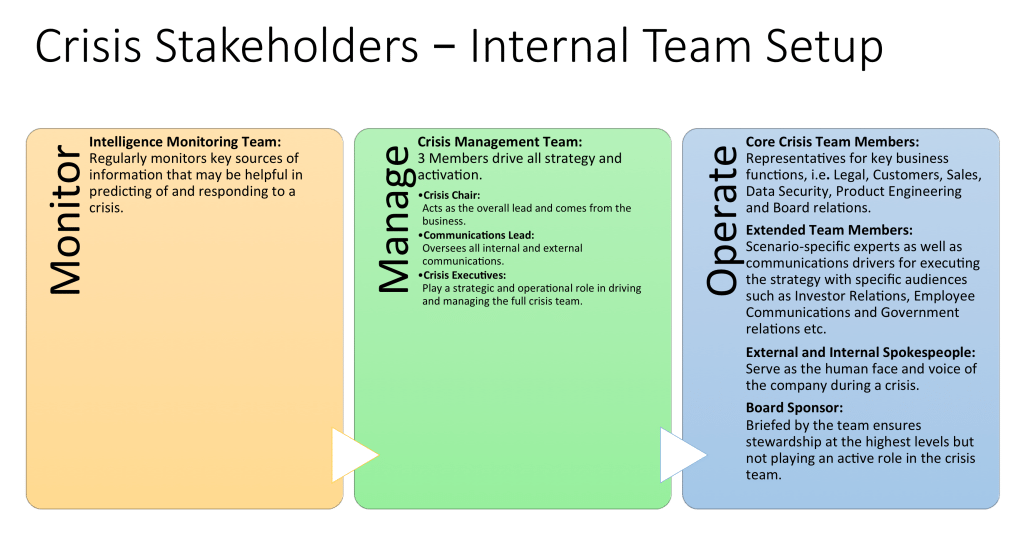
Uncertainty could be one of the handmaidens of crisis. So you can imagine the mood in Washington, D.C., as a new administration transitions into the White House. Presidential transitions often are bumpy, even when the new administration is from the incumbent’s party (think the balky path from the Reagan White House to the Bush team in 1989). The phones of brand communicators and PR firms alike are ringing a lot at the moment.
The present transition has brands scampering for two reasons: One, the new president has a penchant for blasting sectors and companies and summoning CEOs to the Oval Office; two, in announcing its first major policy change last Friday afternoon—traditionally skeleton-crew time for Washington, D.C., media and PR—the new administration abandoned traditional methods of communication.
The executive order, on immigration, was announced sans briefing papers, talking points or spokespeople to explain it to the press. Reportedly several hours passed before the full text of the order was made available to journalists. Only hours after that did White House officials answer reporters’ questions. Confusion and uncertainty led to crisis.
As you know, brands reacted in various ways: Most stayed quiet; some, like Airbnb, tech brands and Starbucks, spoke out against it. A third variation was Budweiser, which inadvertently may find itself enmeshed in a crisis. The brand’s Super Bowl ad, conceived months ago, hails its cofounder, Adolphus Busch, who, you guessed it, was an immigrant. While a spokesperson for the brand insists the ad was not meant to make a political statement, Marcel Marcondes, VP, marketing, Anheuser-Busch, adds, “We recognize that you can’t reference the American Dream today without being part of the conversation.” Still, the ad could prompt action against Budweiser by consumers who find the ad distasteful. With brands operating in this crisis minefield, we thought it an appropriate time to ask communicators about best practices for crisis preparation.
Designating Your Stakeholders: Should your brand lack a crisis plan—and nearly 50% of companies responding to a PR News-Nasdaq PR Relations Services survey admitted that was the case for them ( PRN, Mar. 28, 2016)—one of the first things you need to think about are your stakeholders, says Jock Breitwieser, director, corporate communications, TriNet. “Internally, identify people who will form your crisis team…who will get you up and running”(see diagram). Breitwieser’s internal team includes representatives from product engineering or development (“you need someone who really knows the product and can assess whether or not your crisis will be contained or far-reaching”) and legal. Add to that a board liaison and “someone who is intimate with the customer base…who knows how many people have this [affected] product and so, again, can assess the potential severity of your crisis.”

In Breitwieser’s shop the internal team also includes a representative of the cybersecurity unit. “Having sensitive customer data fall into the wrong hands can lead to the end of your business.”
“During a crisis, having this master list in someone’s head alone will not work. You’re not going to have time to sit and write down [on paper] this list,” he says. The internal stakeholder list (and external stakeholder list) must be part of your crisis plan.
For external stakeholders “think about whom you need to communicate with to reduce external impact of a crisis…this includes customers, investors, partners, vendors, regulators, employees, shareholders…”

While Breitwieser doesn’t discount disseminating crisis information to external stakeholders via social media, he says that’s just one part of the job. “If you want to maintain and build the quality of your relationships with external stakeholders, nothing is better than personal, direct communications.” While he admits it’s impossible to phone all external stakeholders, Breitwieser advocates an automated phone system. “If it’s possible to go down the list [with your team] and have everyone make personal phone calls, that’s the best option,” he says. Which external stakeholder is contacted first depends on the group that the crisis will hit hardest, he says.
Practice, Practice, Practice: He gathers his crisis response team twice yearly to go through a crisis scenario. It’s normally a 45-minute session, he says. Things change when elements of your business change. A new product or service can mean different crisis scenarios and “many new ramifications” and procedures. When that happens new master lists are composed and circulated for comment to the crisis team. Lengthier meetings of 90 minutes might be needed.
A Crisis Case Study

PIO, County of Orange, CA
Many of us are guilty of using the word “crisis” too lightly. During late-January 2016, Carrie Braun, then public affairs manager, Orange County (CA) Sheriff’s Department, used it correctly. A trio of inmates, including two accused of murder, escaped from the county’s jail. She and her partner, Captain Jeff Hallock, had to communicate the incident to citizens but also disseminate information about the escapees, hoping it might lead to their capture. “We realized immediately our social media had to be [easily] shareable,” she says. At first it wasn’t. “Some of it was clunky,” she admits. When the incident went beyond 24 hours, “We knew we had to reach throughout the state,” Braun adds. The importance of spreadability was lesson one. Next, they realized they had to monitor the social conversation 24/7 since it was crucial to relay tips about the escapees ASAP to police. With a two-person team and lacking electronic monitoring tools, Braun and Hallock literally did things by hand, using spreadsheets and screen grabs. They also enlisted supervisors from the department’s 24/7 phone tips line to monitor social while they caught a few hours’ sleep. The sheriff’s department now has electronic tools, she says. That was lesson two. Another takeaway was using social to serve journalists. While some media camped out at the Sheriff’s Department, others did not. Braun and Hallock carried each of the two daily briefings live via Periscope. “We found media used” the feed a lot, she says. When the eight-day ordeal was over and the final escapees were brought in late Saturday night, thanks to a tip, Braun and Hallock decided the citizenry needed to be engaged until the Monday press conference. Braun videotaped the escapees being brought into the station. The footage was posted on the department’s social channels Sunday.
CONTACT: [email protected] [email protected]
Editor’s Note: Breitwieser and Braun will speak at PRNews’ Digital Media Summit and Crisis Management Boot Camp, Feb. 23-24, Huntington Beach, CA. For more information: https://www.prnewsonline.com/go/2017-digital-summit-crisis-management-boot-camp/
